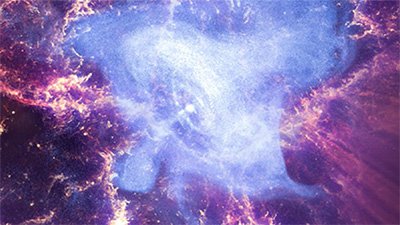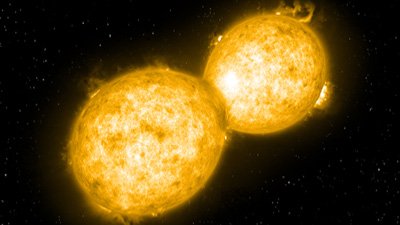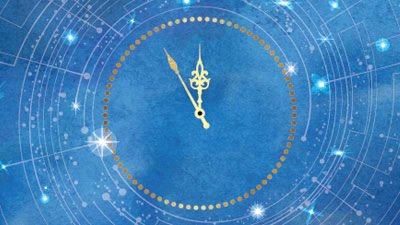Age of the Universe
Evidence for Young Universe
Here are fourteen natural phenomena which conflict with the evolutionary idea that the universe is billions of years old. The maximum possible ages given are always much less than the required evolutionary ages, while the biblical age (6,000 years) always fits comfortably within the maximum possible ages.
Dark Matter
The discovery of dark matter particles (of any kind) might tell us something about the present nature of the universe, but it would not prove the big bang actually happened. From the Bible we can already know the big bang idea is wrong: the Word of God in Genesis 1 says the earth was created before the stars.
Old Universe?
Does the universe really look old, or have we simply been indoctrinated to believe it looks old? Would the Creator God really deceive us into thinking that the universe looks old when, according to the Bible’s account, He created it only about 6,000 years ago? What would a “young universe” look like?
News About Age of the Universe
-
Aug. 3, 2020 from Ken Ham Blog
Secular age-of-the-universe models contradict each other, in contrast with the unchanging testimony from God’s Word about the age of the universe.
Articles About Age of the Universe
-
Feb. 19, 2023 from Answers Magazine
The Cassini-Huygens mission vastly improved our understanding of Saturn. The space probe Cassini’s most amazing discovery was the clear testimony to Saturn’s young age and that it had a Creator.
-
Jan. 30, 2022 from Answers Magazine
Two fundamental laws of physics clash if we try to explain the universe’s origin without a Creator.
-
Dec. 8, 2020 from Answers Magazine
God created the universe mature. Instead of giving just an appearance of age, God created it fully functional, according to the Bible.
PDF Download -
Sept. 23, 2018 from Answers Magazine
After 29 years of research, a creation astronomer has observable evidence that stars can’t be billions of years old.
-
Are Green Pea Galaxies a Problem for Creationists?Feb. 10, 2016
The observations themselves merely tell us that green pea galaxies have unusual amounts of doubly ionized oxygen atoms, not an evolutionary story.
-
Technical In-Depth ArticleThe Primordial Lithium ProblemJan. 15, 2015 from Answers in Depth
Rather than providing good evidence for the big bang model, the abundances of the light elements represents a significant problem for the standard cosmology.
-
Book ChapterDoes Astronomy Confirm a Young Universe?June 9, 2014 from The New Answers Book 3
One of the common objections to biblical creation is that scientists have supposedly demonstrated that the universe is much older than the Bible teaches.
-
Super-colliders Looking for Dark Matter in All the Wrong PlacesSept. 24, 2011 from News to Know
Super-colliders looking for dark matter may be on a wild goose chase.
-
Dark Matter Verified?Jan. 2, 2010 from News to Know
Dark matter: it’s mysterious, elusive (if it does exist), controversial—and now verified?
-
Darkness Falls on Dark EnergyAug. 22, 2009 from News to Know
Though once a high-flying idea, the notion of dark energy has received another devastating blow from two mathematicians.
-
Texas Age of the Universe BattleApril 11, 2009
In the ongoing war over Texas school science standards, the age of the universe is the next battleground.
-
Feedback ArticleDid God Create the Universe with the False Appearance of Age?Jan. 18, 2008 from Feedback
Did God create light from distant stars “in transit” to earth? Dr. Jason Lisle examines this argument from a biblical perspective.
-
Dark Matter No Longer Required?Nov. 3, 2007
Dark matter, a moderately evil-sounding, hypothesized component that is described as helping hold galaxies together, was all the rage just a few months ago. Now, a team of two astrophysicists is arguing that their modified theory of gravity explains the data and leaves no role for dark matter.
-
Feedback ArticleAstrophysics and the age of the universeJuly 20, 2007 from Feedback
A reader asks how Dr. Lisle can be both an astrophysicist and a young-earth creationist.
-
Evidence for a Young WorldJune 1, 2005
Here are fourteen natural phenomena which conflict with the evolutionary idea that the universe is billions of years old.
-
Technical Research PaperThe Hubble LawApril 1, 1995, pp. 7–11
The background of astronomer Edwin Hubble and his famous expanding universe law are reviewed. The significance of the Hubble constant is explained, along with the ongoing controversy regarding its actual value. Finally, a creationist view of the usefulness and limitations of the Hubble law are given.
-
Semi-Technical Research PaperAstronomical ProblemsApril 1, 1995, pp. 5–6
Astronomical theory has lately run into a series of problems. The most troublesome problem is the most recent calculation of the so-called Hubble constant using the repaired Hubble Space Telescope.

Answers in Genesis is an apologetics ministry, dedicated to helping Christians defend their faith and proclaim the good news of Jesus Christ.
- Customer Service 800.778.3390
- Available Monday–Friday | 9 AM–5 PM ET
- © 2025 Answers in Genesis







